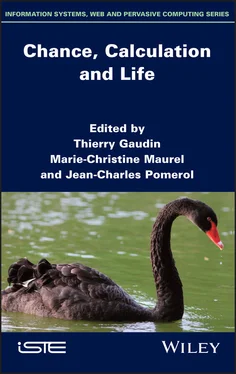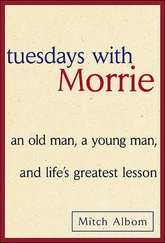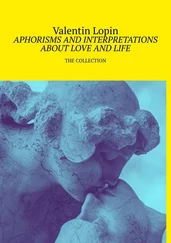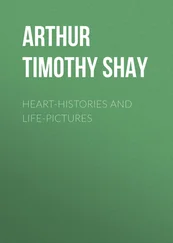Chance, Calculation and Life
Здесь есть возможность читать онлайн «Chance, Calculation and Life» — ознакомительный отрывок электронной книги совершенно бесплатно, а после прочтения отрывка купить полную версию. В некоторых случаях можно слушать аудио, скачать через торрент в формате fb2 и присутствует краткое содержание. Жанр: unrecognised, на английском языке. Описание произведения, (предисловие) а так же отзывы посетителей доступны на портале библиотеки ЛибКат.
- Название:Chance, Calculation and Life
- Автор:
- Жанр:
- Год:неизвестен
- ISBN:нет данных
- Рейтинг книги:3 / 5. Голосов: 1
-
Избранное:Добавить в избранное
- Отзывы:
-
Ваша оценка:
- 60
- 1
- 2
- 3
- 4
- 5
Chance, Calculation and Life: краткое содержание, описание и аннотация
Предлагаем к чтению аннотацию, описание, краткое содержание или предисловие (зависит от того, что написал сам автор книги «Chance, Calculation and Life»). Если вы не нашли необходимую информацию о книге — напишите в комментариях, мы постараемся отыскать её.
Chance, Calculation and Life — читать онлайн ознакомительный отрывок
Ниже представлен текст книги, разбитый по страницам. Система сохранения места последней прочитанной страницы, позволяет с удобством читать онлайн бесплатно книгу «Chance, Calculation and Life», без необходимости каждый раз заново искать на чём Вы остановились. Поставьте закладку, и сможете в любой момент перейти на страницу, на которой закончили чтение.
Интервал:
Закладка:
In the second part, “Randomness, Biology and Evolution”, we begin with the topical subject of epigenetics, through a brilliant chapter by David Sitbon and Jonathan B. Weitzmann. The latter very clearly defines the pathways of randomness in sexual reproduction, in terms of the pairing of alleles and mutations. They also explain the role of chromatin in gene expression, and how the environment is involved in this epigenetic process. In a well-documented article, Bernard Dujon explains how genes are exchanged between neighboring species, or more distantly, during a horizontal transfer. This process is well known in prokaryotes, in particular through the introduction of foreign DNA using retroviruses (a process used in gene therapy). In contrast, the extent of this phenomenon in multicellular eukaryotes is only just beginning to be understood. The acquisition of genes by horizontal transmission justifies the title: “ Quand l’acquis devient héréditaire ” ( When Acquisition becomes Hereditary ). The link between the environment and randomness becomes obvious when one considers that this horizontal acquisition results from encounters, of a random nature, within a given biotope (i.e. the role of environment).
From reproduction to evolution, it is but a step to join Philippe Grandcolas as he tries to show that evolution does not happen completely at random. Evolutionary pressure and the environment constrain evolution. Philippe Grandcolas discusses the significance of adaptive pressure and specific inheritance. By analyzing the notions of convergence and parallelism, as well as the presentation of some evolutionary experiments, Philippe Grandcolas qualifies Gould’s examination on the eventual “replay” of evolution.
With Amaury Lambert, we remain in the field of evolution and focus, more precisely, on the transition from genotype to phenotype in terms of the constraints of Waddington’s 1epigenetic landscape. After distinguishing between the different types of randomness in evolution, Lambert models how the phenotype can resist genetic hazards, thereby providing a precise meaning for the notion of “canalization” as introduced by Waddington. From this standpoint, it becomes normal to wonder whether the emergence of life is the result of random chance. Asking himself this question, Antonio Lazcano gives us a remarkably well-sourced contribution on the history of scientific ideas pertaining to the origins of life, which leads to the conclusion, already glimpsed by Mayr 2, that biology cannot be reduced to physics and chemistry since “Nothing in biology makes sense, except in the light of evolution” 3. Therefore, we can qualify biology as a “historical science”. Like history, evolution has its constraints and its own contingency, and therefore, very probably, random chance played a part in the emergence of life. Establishing this, however, brings about the question, is evolution naturally accompanied by an increase in complexity and an increase in biodiversity?
This question is asked by Jean-Paul Delahaye. To try and give a precise meaning to this question, Jean-Paul Delahaye reminds us of the notions of Kolmogorov computational complexity and Benett structural complexity 4. Like the Universe, which tends to become increasingly complex in the sense of Benett, Jean-Paul Delahaye hypothesizes that evolution is likewise a process that tends toward complexification, one that sometimes backtracks on itself with the result of it being erased. The growing complexity of living things is reflected upon in terms of biodiversity. There seems to be a certain human attraction to complexity, in particular by living organisms, a tropism that opens the door for a discussion on the ethics of organized complexity and it is along this line of questioning that Jean-Paul Delahaye, by way of recommendation, brings about his conclusion.
The purpose of this introduction is to give a brief overview on the richness of this work. From mathematics to the humanities, by way of biology, there are many questions and concepts linked to randomness to uncover. The contributions gathered here have the advantage of presenting the latest scientific results in a synthesized form, and with an abundant bibliography, that will serve both researchers and doctoral students. Yes, randomness is a part of life, evolution and reproduction, but always under certain constraints; importantly, according to the vision of quantum physics, individual randomness does not deter statistical determinism. This is a vast subject for multidisciplinary reflection that speaks to the irreducible individuation of man in a Universe that is increasingly explained and statistically deterministic.
Acknowledgments
This week could not have happened without the understanding of the many working colleagues and their laboratories, who carried some of the cost. We would like to thank EDF Île-de-France for the support given to the association of friends of Cerisy-Pontigny, which made it possible to organize this meeting. In addition, the CNRS institutes (INEE, INSB, INSMI, IN2P3) have also made their contribution. Finally, we would like to thank ISTE,who took over part of the editing, in particular, the English edition.
In memoriam
For two years, Dominique Lacroix helped us with the preparations for this conference, which blossomed from the one held in 2016. She unfortunately left us in June of 2019 and as such, was unable to meet with the speakers whom she knew. She would have been very happy to meet them again; however, the chance that is inherent to life decided otherwise. It is with great sadness that we dedicate this book to her.
Reference
Gaudin, T., Lacroix, D., Maurel, M.-C., Pomerol, J.-C. (eds) (2018). Life Sciences, Information Sciences . ISTE Ltd, London, and John Wiley & Sons, New York.
1 1 See the Waddington landscape images and references in Amaury Lambert’s article.
2 2 See the reference in the article by Antonio Lazcano.
3 3 Quote from Théodore Dobjansky: American Biology Teacher, 35, 125–129, 1973.
4 4 See references in the article by Jean-Paul Delahaye.
Introduction written by Thierry GAUDIN, Marie-Christine MAUREL and Jean-Charles POMEROL.
1
Classical, Quantum and Biological Randomness as Relative Unpredictability
We propose the thesis that randomness is unpredictability with respect to an intended theory and measurement. From this point of view, we briefly discuss various forms of randomness that physics, mathematics and computer science have proposed. Computer science allows us to discuss unpredictability in an abstract, yet very expressive way, which yields useful hierarchies of randomness and may help to relate its various forms in natural sciences. Finally, we discuss biological randomness – its peculiar nature and role in ontogenesis and in evolutionary dynamics (phylogenesis). Randomness in biology is positive as it contributes to organisms’ and populations’ structural stability by adaptation and diversity.
1.1. Introduction
Randomness is everywhere, for better or for worse: vagaries of weather, day-today fluctuations in the stock market, random motions of molecules or random genetic mutations are just a few examples. Random numbers have been used for more than 4,000 years, but they have never been in such high demand than they have in our time. What is the origin of randomness in nature and how does it relate to the only access we have to phenomena, that is, through measurement? How does randomness in nature relate to randomness in sequences of numbers? The theoretical and mathematical analysis of randomness is far from obvious. Moreover, as we will show, it depends on (and is relative to) the particular theory that is being worked on, the intended theoretical framework for the phenomena under investigation.
Читать дальшеИнтервал:
Закладка:
Похожие книги на «Chance, Calculation and Life»
Представляем Вашему вниманию похожие книги на «Chance, Calculation and Life» списком для выбора. Мы отобрали схожую по названию и смыслу литературу в надежде предоставить читателям больше вариантов отыскать новые, интересные, ещё непрочитанные произведения.
Обсуждение, отзывы о книге «Chance, Calculation and Life» и просто собственные мнения читателей. Оставьте ваши комментарии, напишите, что Вы думаете о произведении, его смысле или главных героях. Укажите что конкретно понравилось, а что нет, и почему Вы так считаете.












